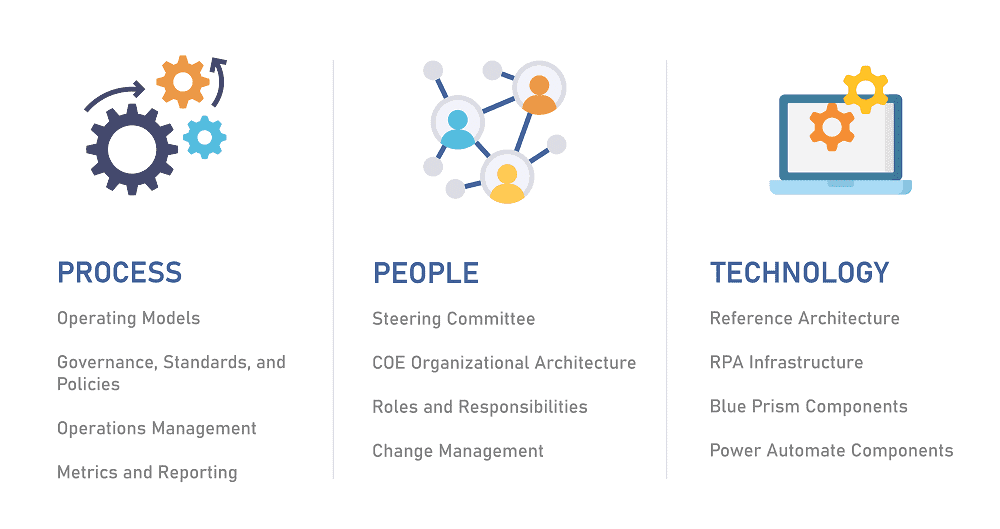RPA Strategy, Governance, and Roadmap for a Full-Service Restaurant Group
The Client
This multi-brand family of restaurants is one of the world’s largest full-service restaurant companies, featuring some of the most recognizable and successful brands that generate over $8B in annual revenue. The company employs over 175,000 team members in more than 1,800 restaurants, creating memorable experiences for nearly 360 million guests in hundreds of communities across North America.
CLIENT PROFILE
EMPLOYEES: 175,000+
INDUSTRY: Food Service
FOUNDED: 1968
Project Scope and Objective
The client began their RPA journey with Blue Prism 4 years ago with a few automated processes before the program stalled for some time. During the pandemic, the program was reinitiated and continued, albeit slowly, led by the tax department. However, the company did not have a well-established strategy, roadmap, and governance structures to identify and manage the demand fulfillment process.
This led them to not identifying the opportunities they expected and left them feeling like their RPA program had stalled. Therefore, they wanted an outside firm to take a fresh look at their approach to RPA, their Center of Excellence (CoE), and what they needed to do for a successful program.
They also had access to Microsoft Power Platform licenses now and wanted to understand better how the Microsoft Power Platform could assist them from an RPA perspective as well as a personal productivity standpoint.
The main objectives for this project were:
Key Themes
Smartbridge performed a strategic assessment spanning people, process, and technology to fully understand the client’s current state. Five key themes emerged as a result.
The Smartbridge Solution & Methodology
Smartbridge leadership and client leadership discussed the best practices and the necessary structures needed to solidify and accelerate the automation program in pursuit of the company’s business transformation and digital transformation goals.
Smartbridge used its strategy assessment and roadmap methodology to conduct a current state assessment of the client’s existing RPA CoE processes, architecture, organizational model, operating model, and skill sets. By analyzing across people, process and technology, Smartbridge identified twenty-four opportunities to improve the RPA Program, which were scored and prioritized using Smartbridge’s strategy tools. Smartbridge and the client then established a clear strategy and strategic roadmap for implementing the twenty-four opportunities.
Microsoft’s Power Platform CoE was installed to help their infrastructure and business manage the Power Platform subcomponents, automations, apps, and environments. Additionally, Smartbridge and the client put guardrails in place to ensure a successful adoption into the organization to drive both personal and business productivity.
In all, Smartbridge produced the following deliverables to address their RPA journey requirements:
Results
With Smartbridge’s strategy and roadmap implementation, the client has embarked on a journey to accelerate the adoption of RPA technology with the opportunity to transform business operations significantly. The results of the strategic roadmap will span people, processes, and technology as outlined in the image below.

Keep Reading: Starting Your RPA Center of Excellence
There’s more to explore at Smartbridge.com!
Sign up to be notified when we publish articles, news, videos and more!
Other ways to
follow us:


